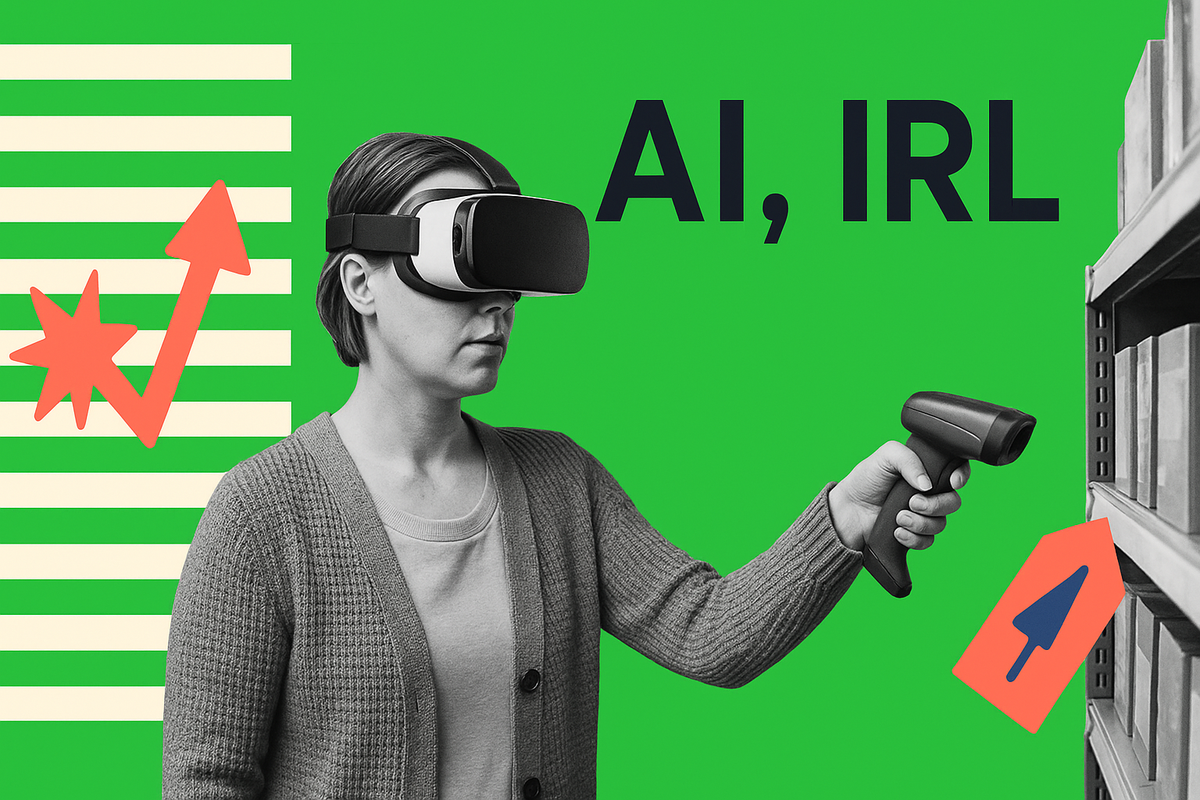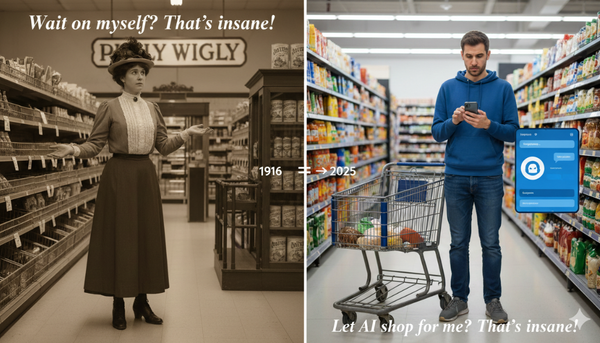AI in real life: how retailers and brands are leveraging AI (real numbers)
Most businesses struggle not with what AI can do, but with envisioning what it should do for their specific challenges. Today I'm sharing four real examples where companies figured out the "what" and can tell you exactly what they got back.

The biggest barrier to AI adoption isn't the technology—it's imagination. Many retailers and brands struggle not with what AI could do, but with envisioning what it should do for their specific challenges.
That's why today I'm sharing four real-world, practical applications of AI from retailers and brands, AND most importantly, the outcome. How much did it save them or make them?
If you like this content format, please let me know and I'll consider turning it into a regular series.
In this edition, I have four great case studies for you:
- Product review analysis: 15-74% improvement in CVR
- Walmart Shrinks Design-to-Production Cycle by 70%
- Drafting legal contracts: Saved $92K
- J&J trims AI initiatives from 900 to the vital few
Let's go!
1 - Product review analysis: 15-74% improvement in CVR
Elizabeth Rivas, eCommerce Marketplace Director at the supplement brand AlgaeCal, told me this week how she is using AI for Customer Review Analysis.
The company uses AI to process and analyze thousands of product reviews, including their own and competitors'. This helps identify patterns like what customers love, frustrations, and market gaps. Insights are used to:
- Update product imagery.
- Create targeted conquest campaigns against competitor ASINs, highlighting weaknesses.
- Incorporate exact customer language into marketing copy for relevance and resonance.
A specific example: Customers were confused about how to take a product, so the company created an image with clear instructions. This change was based on insights from AI-analyzed reviews and contributed to improved conversions.
Result: 15-74% conversion improvement across products on Amazon
2 - Walmart Shrinks Design-to-Production Cycle by 70%
Walmart announced a new AI-enabled tech solution that cuts the time designers spend researching and conceptualizing new products for their fashion ranges. The company calls it "Trend-to-Product."
Here's how it works:
- Pulls trend data from runway, social media, and sales performance
- Builds AI mood boards complete with collection names, colors, textures and ideas
- Designers and merchants refine the mood boards using sell-through data and their experience
- Finally, generates fashion tech packs that instruct suppliers on exactly how to make each item
Result: Production time cut from 6 months to 6–8 weeks
3 - Drafting legal contracts: Saved $92K
Ok, so this example isn't from a retailer or brand, but it it just too good to not share with you.
On his podcast Never Enough, entrepreneur Andrew Wilkinson described how he used Claude to draft a legal agreement to merge 3 companies which would have ordinarily cost $80-100K in legal fees.
He then asked a lawyer to review it, saying that another firm had prepared the agreement and he only wanted obvious errors and issues to be addressed.
This lawyer billed him $2K for the review. He said the draft was really good and kept asking which firm prepared it.
"He was really unhappy when we finally told him that it was Claude," Wilkinson said.
Results: an $80- $100K legal contract cost $2K (plus a Claude subscription)
4 - J&J trims AI initiatives from 900 to the vital few
Johnson & Johnson took a "thousand flowers" approach to AI experimentation, encouraging teams to explore nearly 900 generative AI use cases across the company.
After about a year of broad experimentation, J&J discovered that only 10% to 15% of artificial intelligence use cases were delivering 80% of the value.
The company then shifted strategy:
- Moving away from broad experimentation towards a more prioritized approach
- Allocating resources only to the highest-value generative AI use cases
- Cutting projects that are redundant, not working, or where non-AI technology works better
Result: Going from 900 AI experiments down to 90-135 focused projects (if applying the 10-15% value rule)
Bonus Round: An AI Job Resilience Self-Assessment
My friend & ecomm industry consultant, Danny Silverman, created a 15-question self-assessment to help you evaluate how resilient your role is to AI automation. It helps identify where your work is most human, most strategic, and most vulnerable to automation—so you can plan accordingly.
Link to Danny's Futureproof AI assessment
That's it for today! Have an AI success story of your own? I'm always looking for real results to share. Hit reply and tell me what's working.





